 W
WThe Canadian Armed Forces, or Canadian Forces, are the unified armed forces of Canada, as constituted by the National Defence Act, which states: "The Canadian Forces are the armed forces of Her Majesty raised by Canada and consist of one Service called the Canadian Armed Forces."
 W
W32 Signal Regiment is a Canadian Army primary reserve unit, part of the Royal Canadian Corps of Signals. It is the dedicated signals unit within 32 Canadian Brigade Group.
 W
WThe Battlefords Army Cadets is a free youth program open to youth aged 12 – 18 sponsored by the Canadian Forces and the civilian Army Cadet League of Canada. 2537 Battlefords Army Cadets are affiliated with the North Saskatchewan Regiment and cadets may wear the badges and accoutrements of the affiliated unit.
 W
WAmherstburg Royal Naval Dockyard was a Provincial Marine and then a Royal Navy yard from 1796 to 1813 in Amherstburg, Ontario, situated on the Detroit River. The yard comprised blockhouses, storehouses, magazine, wood yard and wharf. The yard was established in 1796 to support the Upper Canada Provincial Marine after Great Britain ceded a pre-existing shipyard on the Detroit River to the United States. Amherstburg Royal Naval Dockyard constructed four warships for the Lake Erie detachment of the Provincial Marine before and during the War of 1812. In 1813 the dockyard was abandoned and destroyed when the British retreated and never reopened. In 1928, the site was designated a National Historic Site of Canada.
 W
WThe associate minister of national defence is a member of the Canadian cabinet who is responsible for various files within the defence department as assigned by the prime minister or defence minister.
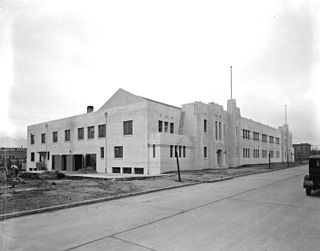 W
WBessborough Armoury is a Canadian Forces armoury located at 2025 West 11th Avenue in Vancouver, British Columbia.
 W
WThe Bureau of Pensions Advocates (BPA) is a nation-wide, semi-independent law firm within Canada's Department of Veterans Affairs. In place in one form or another since October 1, 1930, it provides free counsel and legal representation to Canadian Veterans and members of the Royal Canadian Mounted Police in appeals before the Veterans Review and Appeal Board regarding Veterans Affairs Canada decisions on their disability pension and award applications.
 W
WCanada has not officially maintained and possessed weapons of mass destruction since 1984 and, as of 1998, has signed treaties repudiating possession of them. Canada ratified the Geneva Protocol in 1930 and the Nuclear Non-proliferation Treaty in 1970, but still sanctions contributions to American military programs.
 W
WThe Canadian Armed Forces Tattoo 1967 was a series of military tattoos or displays performed by members of the Canadian military portraying more than three hundred years of Canada's military history. The Tattoo, which was the Canadian military's contribution to Canada's centennial year celebrations in 1967, toured the country from coast to coast. This was the largest such event in the history of the Canadian military.
 W
WThe number of Canadian Forces' fatalities resulting from Canadian military activities in Afghanistan is the largest for any single Canadian military mission since the Korean War between 1950 and 1953. A total of 159 Canadian Forces personnel have been killed in the war since 2002.
 W
WThe Canadian Forces Health Services Group is a formation of the Canadian Forces within the Military Personnel Command. It includes personnel from both the Royal Canadian Medical Service and the Royal Canadian Dental Corps, fulfills all military health system functions from education and clinical services to research and public health, and is composed of health professionals from over 40 occupations and specialties in over 120 units and detachments across Canada and abroad.
 W
WCanadian Forces Radio and Television (CFRT), Radiotélévision des Forces canadiennes (RTFC) in French, was a television and radio network system broadcast by satellite to those members of the Canadian Forces ground forces who served overseas in places such as the Middle East, Africa and Europe and, due to popular demand, the service began broadcasting to Her Majesty's Canadian Ships in April 2002. The network was not available domestically within Canada.
 W
WThe Canadian Women's Army Corps was a non-combatant branch of the Canadian Army for women, established during the Second World War, with the purpose of releasing men from those non-combatant roles in the Canadian armed forces as part of expanding Canada's war effort. Most women served in Canada but some served overseas, most in roles such as secretaries, mechanics, cooks and so on. The CWAC was finally abolished as a separate corps in 1964 when women were fully integrated into the Canadian armed forces. The headquarters of the CWAC was based in Goodwin House in Ottawa.
 W
WThe Chief of the Defence Staff is the second most senior member of the Canadian Armed Forces and heads the Armed Forces Council, having primary responsibility for command, control, and administration of the forces, as well as military strategy, plans, and requirements. The position is held by a senior member of one of the three main branches of the Canadian Armed Forces. The current CDS, since 17 July 2015, is Jonathan Vance.
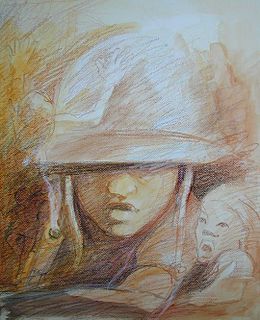 W
WChildren in the military are children who are associated with military organisations, such as state armed forces and non-state armed groups. Throughout history and in many cultures, children have been involved in military campaigns. For example, thousands of children participated on all sides of the First World War and the Second World War. Children may be trained and used for combat, assigned to support roles such as porters or messengers, or used for tactical advantage as human shields or for political advantage in propaganda.
 W
WIn the Canadian Forces, the rank of colonel (Col) is a rank for officers who wear army or air force uniform, equal to a captain for officers who wear navy uniform. A colonel is the highest rank of senior officer. A colonel is senior to a lieutenant-colonel or naval commander, and junior to a brigadier-general or commodore.
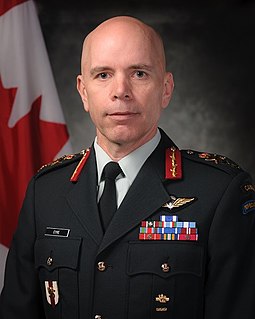 W
WThe Commander of the Canadian Army is the institutional head of the Canadian Army. This appointment also includes the title Chief of the Army Staff and is based at National Defence Headquarters in Ottawa, Ontario.
 W
WThe Commander-in-Chief of the Canadian Armed Forces is the supreme commander of Canada's armed forces. Constitutionally, command-in-chief is vested in the Canadian sovereign, presently Queen Elizabeth II. As the representative of the Queen, the Governor General of Canada, presently Julie Payette, has been authorized through letters patent to act on behalf of the sovereign and consequently also uses the title Commander-in-Chief of the Canadian Forces. By protocol, the title used within international contexts is Commander-in-Chief of Canada.
 W
WConnaught Cadet Training Centre, is a training centre for Royal Canadian Army Cadets, Royal Canadian Air Cadets, and Royal Canadian Sea Cadets since 1989. It is located at the Connaught Range and Primary Training Centre (CRPTC), in Ottawa, Ontario, and trains approximately 500 cadets each summer in 3, 4, 6, and 9 week courses. Administered by the Canadian Forces, the program is funded through the Department of National Defence.
 W
WEmergency Government Headquarters is the name given for a system of nuclear fallout shelters built by the Government of Canada in the 1950s and 1960s as part of continuity of government planning at the height of the Cold War. Situated at strategic locations across the country, the largest of these shelters are popularly referred to as "Diefenbunkers", a nickname coined by federal opposition politicians during the early 1960s. The nickname was derived from the last name of the Prime Minister of the day, John Diefenbaker, who authorized their construction. Over fifty facilities were built along several designs for various classes of service.
 W
WThe Fortissimo Sunset Ceremony is an annual Canadian military music event held on the grounds of Parliament Hill in the Canadian capital of Ottawa.
 W
WThe military rank of general in Canada is typically held by only one officer whose position is Chief of the Defence Staff (CDS) and the senior uniformed officer of the Canadian Forces. The rank is referred to as "four-star", a reference to its American equivalent. It is the equivalent of the naval rank of admiral. Prior to the 1968 unification of the Canadian Forces, the equivalent rank in the Royal Canadian Air Force was air chief marshal.
 W
WHMCS Stone Frigate is a dormitory of the Royal Military College of Canada in Kingston, Ontario. Built to be a naval storehouse, it was converted to its present use in 1876 on the establishment of the college.
 W
WThe Kingston Royal Naval Dockyard was a Royal Navy Dockyard from 1788 to 1853 in Kingston, Ontario, Canada, at the site of the current Royal Military College of Canada.
 W
WIn the Canadian Forces, lieutenant-colonel is a rank for officers who are in the Canadian Army or the Royal Canadian Air Force, equal to commander for officers who are in the Royal Canadian Navy. A lieutenant-colonel is the second-highest rank of senior officer. A lieutenant-colonel is senior to a major or lieutenant-commander, and junior to a colonel or naval captain.
 W
WIn the Royal Canadian Navy, the rank of lieutenant commander (LCdr) is the naval rank equal to major in the army or air force and is the first rank of senior officer. Lieutenant commanders are senior to lieutenants (N) and to army and air force captains, and are junior to commanders and lieutenant colonels.
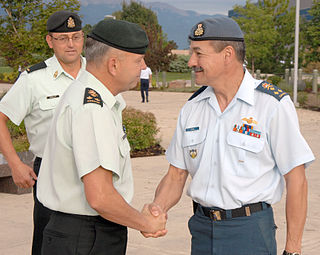 W
WIn the Canadian Forces, the rank of lieutenant-general (LGen) is an Army or Air Force rank equal to a vice-admiral of the Navy. A lieutenant-general is a general officer, the equivalent of a Naval flag officer. A lieutenant-general is senior to a major general or rear-admiral, and junior to a general or admiral. Prior to 1968, Canadian Air Force officers held the equivalent rank of air marshal, which was abolished with the unification of the Canadian Forces.
 W
WThe Major-General George R. Pearkes Building is the principal location of Canada's National Defence Headquarters (NDHQ) and is located in downtown Ottawa, Ontario.
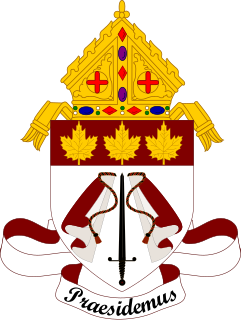 W
WThe Military Ordinariate of Canada is a military ordinariate (pseudo-diocese) of the Roman Catholic Church.
 W
WThe Navy League of Canada is a non-profit organization founded in 1895 and incorporated in 1918. Originally formed to promote maritime issues to Canadians, the Navy League is the non-governmental partner of the Department of National Defence and supports the Royal Canadian Sea Cadets program. The Navy League also independently delivers the Navy League Cadet program for boys and girls between the ages of nine and twelve.
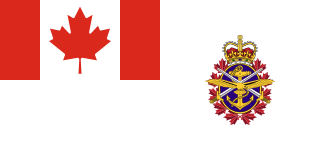 W
WPersonnel branches, in the Canadian Armed Forces (CAF), are groupings of related military occupations.
 W
WThe Primary Reserve of the Canadian Armed Forces is the first and largest of the four sub-components of the Canadian Forces reserves, followed by the Supplementary Reserve, the Canadian Rangers, and the Cadet Organizations Administration and Training Service.
 W
WThe "Royal Air Force March Past" is the official march of the Royal Air Force (RAF) and is used in some other Commonwealth air forces.
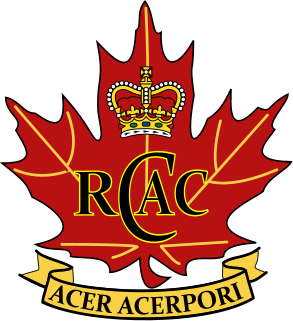 W
WThe Royal Canadian Army Cadets is a national Canadian youth program sponsored by the Canadian Armed Forces and the civilian Army Cadet League of Canada. Under the authority of the National Defence Act, the program is administered by the Canadian Armed Forces and funded through the Department of National Defence. Additionally, the civilian partner of the Royal Canadian Army Cadets, the Army Cadet League of Canada, also ensures financial, accommodations and transportation support for RCAC programs and services at a community level.
 W
WThe Royal Canadian Legion is a non-profit Canadian ex-service organization founded in 1925. Membership includes people who have served as military, Royal Canadian Mounted Police, provincial and municipal police, Royal Canadian Air, Army and Sea Cadets, direct relatives of members and also affiliated members. Membership is now also open to the general public.
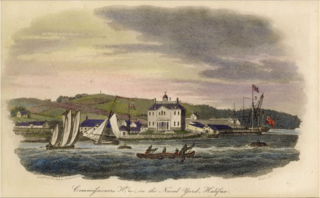 W
WRoyal Naval Dockyard, Halifax was a Royal Navy base in Halifax, Nova Scotia. Established in 1759, the Halifax Yard served as the headquarters for the Royal Navy's North American Station for sixty years, starting with the Seven Years' War. The Royal Navy continued to operate the station until it was closed in 1905. The station was sold to Canada in 1907 becoming Her Majesty's Canadian Dockyard, a function it still serves today as part of CFB Halifax.
 W
WThe Soldier Apprentice Training Program of the Canadian Army was a program designed to raise the educational level of various corps of the Canadian army after World War II and the Korean War and to graduate highly trained soldiers for future employment as non-commissioned officers NCOs and senior NCOs. This was necessary because of the lack of educational training of many of the soldiers who decided to remain in the services after these two conflicts; many of these had joined the military at a young age and in many cases had not finished their education in the rush to help defend freedom in the world at that time.
 W
WThe Vice Chief of the Defence Staff is the third most senior member of the Canadian Armed Forces, reporting to the Chief of the Defence Staff (CDS) as well as the Deputy Minister of National Defence. The Directorate General Executive Coordination, the Canadian Forces Provost Marshal, the National Cadet and Junior Canadian Rangers Support Group and several other departments report to the VCDS, who is appointed by the CDS.
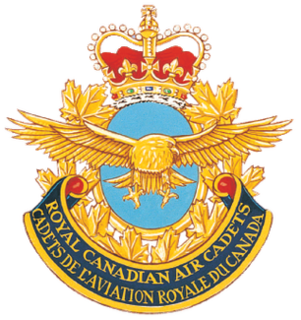 W
W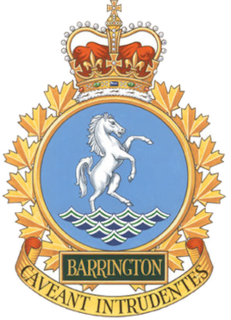 W
W